Experience the Magic of Xanadu: A Traveler’s Guide to its Hidden Treasures
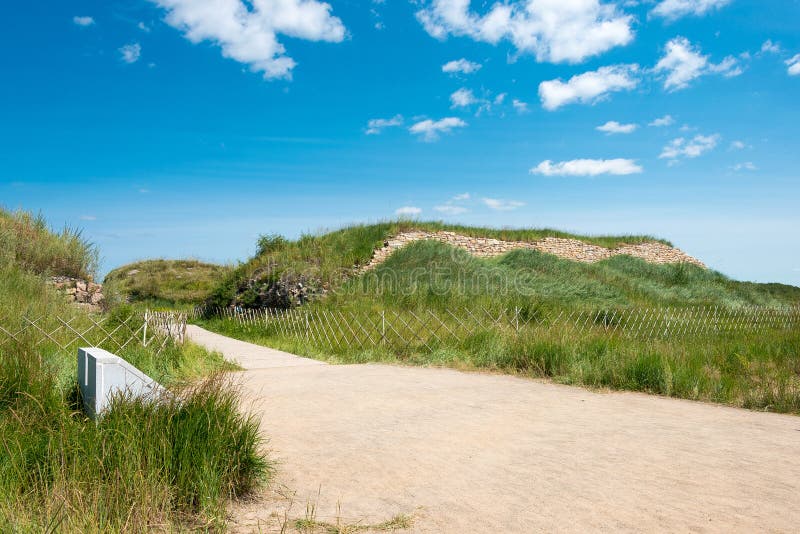
An Essential Guide to Visiting Site_Of_Xanadu
Nestled in the expansive grasslands of Inner Mongolia, the Site of Xanadu, or Yuán Shàngdū, beckons travelers with its rich tapestry of history and culture. Once a vibrant summer capital during the Yuan Dynasty in the 13th and 14th centuries, this ancient city served as a majestic retreat for emperors escaping the sweltering heat of the southern capital, Dadu (modern-day Beijing). The site, immortalized by the Venetian explorer Marco Polo as “the richest city on earth,” offers a mesmerizing glimpse into the confluence of nomadic traditions and the agrarian practices of the Han Chinese.
As you wander through the remnants of Xanadu, imagine the courts filled with the sounds of Mongolian cavalry and the whispers of state affairs conducted under the watchful eyes of Kublai Khan, Genghis Khan’s grandson and the architect of this grand vision. The sprawling layout of the city, defined by the City Courtyard, the Imperial City, and the Outer City, serves as a canvas where the past comes alive amidst the ruins and grassy mounds.
Whether you’re a history enthusiast seeking to uncover the legacies of the Mongolian Empire or a nature lover wanting to soak in the stunning landscapes of the Jinlianchuan grassland, Xanadu promises an unforgettable experience. With its recent designation as a UNESCO World Heritage site, this enchanting destination invites you to explore its secrets and immerse yourself in the stories that have shaped this iconic locale. Your journey to Xanadu is not just a visit to a historical site; it’s a step back in time, where echoes of greatness linger in the windswept plains.
In This Guide
- An Essential Guide to Visiting Site_Of_Xanadu
- The Rich History and Legends of Site_Of_Xanadu
- Main Highlights: What You Absolutely Can’t Miss
- Planning Your Visit: A Practical Guide
- Tickets: Prices, Booking, and Tips
- How to Get There: A Complete Transportation Guide
- Local Cuisine and Accommodation Nearby
- Frequently Asked Questions
- Final Thoughts on Your Trip
The Rich History and Legends of Site_Of_Xanadu
Nestled in the vast grasslands of Inner Mongolia, the Site of Xanadu, known in Chinese as 元上都 (Yuán Shàngdū), stands as a testament to a rich tapestry of history that interweaves the grandeur of the Yuan Dynasty with the nomadic culture of northern China. Originally constructed in 1256 under the name Kaiping City, this remarkable site served as the summer capital for the Mongol emperors during the 13th and 14th centuries.
The visionary Kublai Khan, grandson of Genghis Khan, ascended to the throne in 1271, transforming the political landscape of China. He not only renamed the dynasty from Song to Yuan but also rebranded Kaiping City as Shangdu, translating to “Upper Capital.” This strategic site allowed emperors to escape the sweltering heat of the southern capital, Dadu (modern-day Beijing), while conducting state affairs amid the serene beauty of the grasslands.
Marco Polo, the Venetian explorer who famously journeyed through Asia, lauded Xanadu as “the richest city on earth.” His accounts, penned in the late 13th century, painted a picture of opulence and cultural fusion, making Xanadu a place of intrigue that rivals the historical significance of Pompeii in Italy. The city was a harmonious blend of traditional Han Chinese architecture and Mongolian influences, featuring an array of structures, including the majestic Crystal Palace and the Great Joy Palace.
However, the glory of Xanadu was not to last indefinitely. Following the Ming Dynasty’s rise to power in 1369, the city underwent a series of transformations, ultimately losing its status as the imperial capital. By 1430, it had been reduced to a mere guard post, succumbing to the ravages of time and conflict. The site was largely abandoned, leaving only remnants of its once-splendid structures.
The significance of Xanadu was officially recognized when it was inscribed as a UNESCO World Heritage site in 2012, highlighting its importance as a cultural relic. Today, travelers can explore the ruins, which evoke the grandeur of the past through crumbling walls and grassy mounds, inviting contemplation of the stories held within its remains.
Visitors can immerse themselves in this rich historical narrative by witnessing the site’s major attractions, including a towering statue of Kublai Khan and the lush Jinlianchuan Prairie, once a favored retreat of the emperors. The nearby Xanadu Site Museum offers further insights into the life and times of Kublai Khan, showcasing artifacts that illuminate the fascinating history of the Yuan Dynasty.
In visiting Xanadu, one not only steps back in time but also engages with the legends that have shaped the cultural landscape of Mongolia and beyond, making it a must-see for history enthusiasts and curious travelers alike.
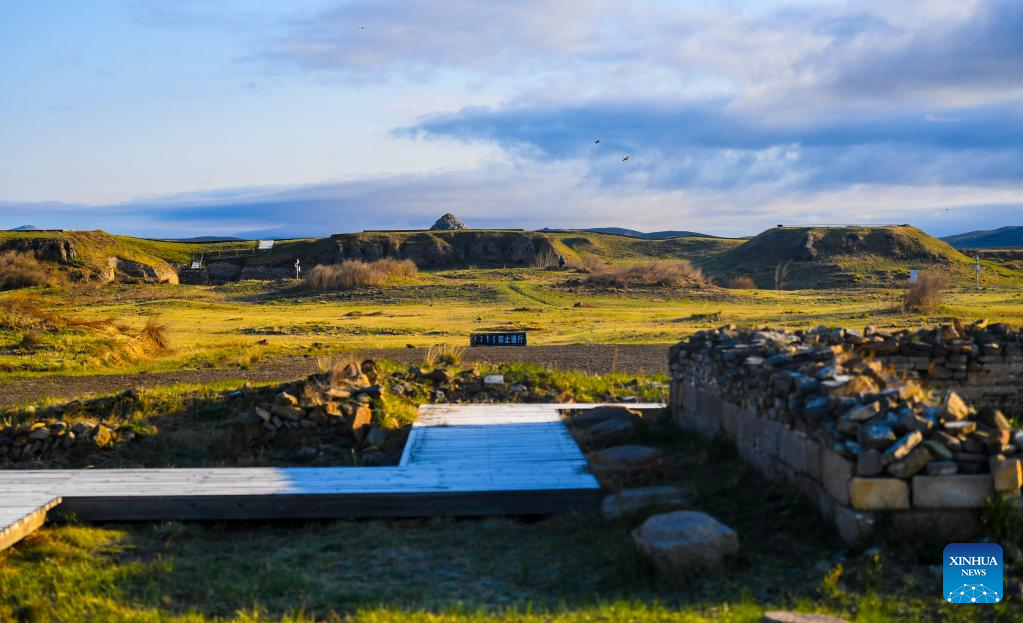
Site_Of_Xanadu.
Main Highlights: What You Absolutely Can’t Miss
Visiting the Site of Xanadu is an enchanting journey into the heart of China’s Mongolian heritage and the storied past of the Yuan Dynasty. Here’s what you absolutely can’t miss during your visit:
1. The Magnificent Statue of Kublai Khan
At the entrance of the site, you’ll be greeted by an impressive grouping of statues that tower majestically over visitors. The centerpiece is a colossal statue of Kublai Khan, the founder of the Yuan Dynasty. Standing 7.5 meters tall and flanked by representations of Mongolian cavalry and key historical figures like Marco Polo and Kublai’s advisor Liu Bingzhong, this grand monument encapsulates the essence of Xanadu’s rich history. Standing here, you can almost hear the echoes of the past as you contemplate the significance of this monumental figure.
2. The Ruins of Xanadu
Explore the remnants of what was once a thriving summer capital. The ruins, now a grassy expanse punctuated by crumbling walls and remnants of ancient structures, evoke a sense of nostalgia and wonder. As you wander through the site, imagine the vibrant court life that thrived here under Kublai Khan’s reign. This hauntingly beautiful landscape serves as a poignant reminder of the passage of time and the impermanence of greatness.
3. Jinlianchuan Prairie
Just beyond the ruins lies the picturesque Jinlianchuan Prairie, renowned for its stunning natural beauty. In the summer months, the prairie bursts into a golden tapestry of nasturtiums, making it look like a shimmering ocean of flowers. Here, you can immerse yourself in traditional Mongolian activities such as horseback riding and archery, or simply relax and admire the breathtaking scenery. It’s the perfect spot for a picnic or a leisurely stroll amidst the lush grasslands.
4. Xanadu Site Museum
To deepen your understanding of the site’s historical importance, a visit to the Xanadu Site Museum is essential. Located just 5 kilometers south of the main site, the museum showcases a wealth of artifacts, maps, and detailed models that illustrate Xanadu’s grandeur at its height. From ancient relics to insightful exhibits about Kublai Khan and the Mongolian Empire, this museum offers a comprehensive glimpse into the past that you won’t want to miss.
5. Architectural Highlights
As you explore the site, pay special attention to the architectural remnants, including the City Courtyard, the Imperial City, and the Outer City. The layout reflects a blend of Han Chinese and Mongolian influences, illustrating the cultural integration that characterized the Yuan Dynasty. Notable structures within the City Courtyard, such as the Great Joy Palace and the Solemnity and Serenity Pavilion, provide a fascinating insight into the aesthetic values and architectural techniques of the time.
6. The Natural Landscape
Beyond the historical and cultural attractions, the surrounding landscape itself is a highlight. The site is enveloped by the Longgang Mountains to the north and the expansive grasslands to the south, creating a stunning backdrop that enhances the overall experience. Whether you choose to hike, take photographs, or simply enjoy the tranquility of the area, the natural beauty of Xanadu is sure to leave you in awe.
Planning Your Visit
To make the most of your visit to Xanadu, plan your trip between June and September when the weather is mild and the grasslands are at their most vibrant. Allocate 1-2 hours to explore the site, but be prepared to linger longer as you soak in the history and beauty around you.
Each corner of the Site of Xanadu tells a story, making it a must-visit destination for history enthusiasts and nature lovers alike. Don’t forget your camera; the memories you create here will last a lifetime!
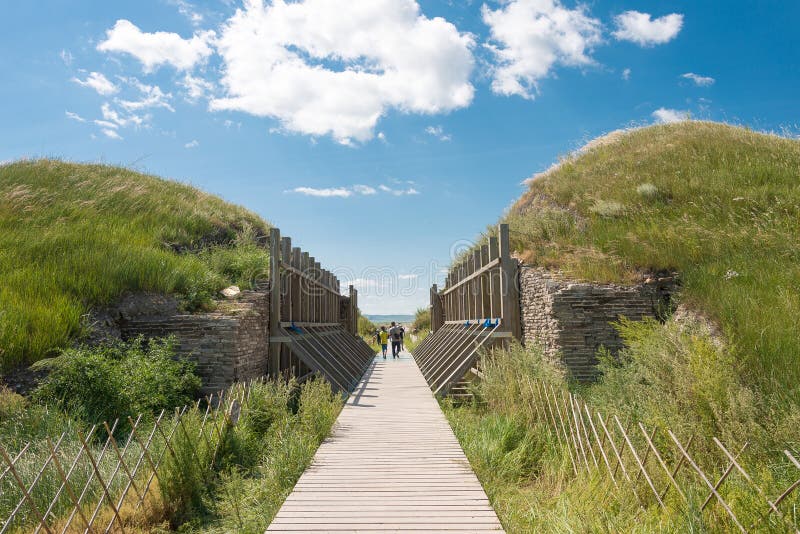
Site_Of_Xanadu.
Planning Your Visit: A Practical Guide
Planning Your Visit to the Site of Xanadu
Embarking on a journey to the Site of Xanadu, the summer capital of the Yuan Dynasty, offers a unique opportunity to explore a blend of rich history, stunning landscapes, and vibrant cultures. Here’s everything you need to know to make the most of your visit.
Essential Information
- Location: The Site of Xanadu is situated in Zhenglan Banner, Xilingol League, Inner Mongolia Autonomous Region, China.
- Chinese Name: 元上都 (Yuán Shàngdū), meaning “Upper Capital.”
- Opening Hours: Daily from 6 AM to 6 PM.
- Recommended Visit Duration: 1–2 hours.
- Best Time to Visit: June to September, when the temperatures are mild and the grasslands are lush and vibrant.
Getting There
Due to its remote location, traveling to Xanadu typically requires a private transfer. Here are the distances and travel times from major nearby cities:
- From Beijing: Approximately 370 kilometers (230 miles) or a 5½ hour drive.
- From Hohhot: About 565 kilometers (351 miles) or a 6½ hour drive.
Given the distances and the limited public transportation options, it’s advisable to consider a private vehicle or a guided tour for a more comfortable journey.
Suggested Itineraries
3-Day Trip from Beijing:
– Day 1: Depart from Beijing to Zhenglan Banner. Stop at Gongbaolage Grassland for a Mongolian welcome ceremony and enjoy grassland activities, including horse racing and wrestling.
– Day 2: Explore the Site of Xanadu, visit the Xanadu Site Museum, and take in the breathtaking views of Jinlianchuan Prairie.
– Day 3: Discover the cultural heritage of Duolun County before returning to Beijing.
4-Day Trip from Hohhot:
– Day 1: Take a leisurely drive from Hohhot to Zhenglan Banner.
– Day 2: Visit the Site of Xanadu, including the museum and prairie, then enjoy Dolon-nuur Lake.
– Day 3: Explore local temples and learn about the region’s history.
– Day 4: Drive back to Hohhot.
What to See and Do
-
The Statue of Kublai Khan: Don’t miss the impressive 7.5-meter tall statue symbolizing the 750-year history of Xanadu, flanked by figures representing Mongolian cavalry and Yuan Dynasty ministers.
-
Explore the Ruins: Wander through the remnants of Xanadu, reflecting on its past glory as you observe the grassy mounds and crumbling walls.
-
Jinlianchuan Prairie Activities: Engage in traditional Mongolian pursuits such as horseback riding and archery amidst stunning natural scenery.
-
Visit the Xanadu Site Museum: Located about 5 kilometers south of the main site, this museum showcases models, antiques, and fascinating exhibits related to Kublai Khan and the Mongolian Empire.
Tips for Your Visit
-
Dress Appropriately: The weather can vary, so dress in layers. Comfortable walking shoes are a must for exploring the ruins and prairie.
-
Stay Hydrated: Bring water, especially if you plan to spend extended time outdoors.
-
Local Cuisine: Don’t miss out on tasting Mongolian dishes, such as lamb and dairy products, available at local eateries around the site.
-
Guided Tours: Consider hiring a local guide for a richer understanding of the historical context and significance of Xanadu.
Contact for More Information
If you have specific questions or need assistance planning your trip, reach out to travel experts specializing in Inner Mongolia. They can help customize your itinerary to ensure you experience the best this historical site has to offer.
With its breathtaking landscapes and profound history, the Site of Xanadu is sure to leave a lasting impression on any traveler. Prepare for an unforgettable adventure into the heart of Mongolia’s imperial past!
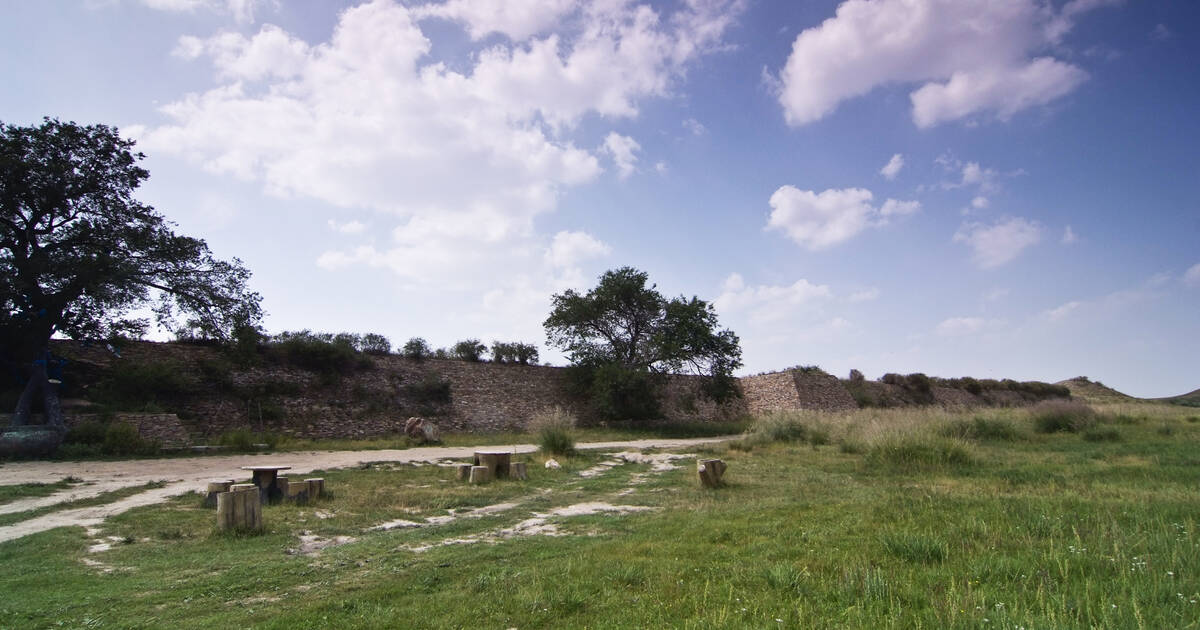
Site_Of_Xanadu.
Tickets: Prices, Booking, and Tips
When planning your visit to the Site of Xanadu, it’s essential to be well-informed about ticket prices, booking options, and some handy tips to ensure a smooth experience.
Ticket Information
The entrance fee for the Site of Xanadu is quite reasonable, making it accessible to a wide range of travelers. As of October 2023, the ticket prices are as follows:
- General Admission: Approximately 30 CNY (about $4.50 USD).
- Students and Seniors: Discounts are available, bringing the ticket price down to around 15 CNY (about $2.25 USD). Be sure to carry a valid student ID or senior citizen identification to claim this discount.
Booking Your Tickets
Tickets can be purchased on-site at the entrance to the Site of Xanadu. However, during peak tourist seasons (June to September), it is advisable to arrive early to avoid long queues. If you prefer a more convenient option, you can also book your tickets in advance through local travel agencies or online platforms that specialize in tours of Inner Mongolia.
Tips for Your Visit
-
Best Time to Visit: The ideal months for visiting are from June to September when the weather is mild, and the grasslands are lush and vibrant. This is also the time when various cultural activities are often organized.
-
Guided Tours: Consider joining a guided tour for a more enriching experience. Knowledgeable guides can provide valuable insights into the history of Kublai Khan and the Yuan Dynasty, enhancing your understanding of this UNESCO World Heritage site.
-
Stay Hydrated: The site covers a large area, so bring water to stay hydrated as you explore.
-
Plan Your Itinerary: Allocate about 1-2 hours for your visit to fully appreciate the historical significance and the scenic beauty of the site, including the Jinlianchuan Prairie and the nearby Xanadu Site Museum.
-
Transportation: Given its remote location, private transportation is the most practical option for reaching Xanadu. Consider arranging a private transfer from major cities like Beijing or Hohhot to make the journey more comfortable.
By keeping these details in mind, you can ensure that your visit to the Site of Xanadu is enjoyable, informative, and memorable!
How to Get There: A Complete Transportation Guide
Getting to the Site of Xanadu
Visiting the Site of Xanadu, the illustrious summer capital of the Yuan Dynasty, requires a bit of planning, especially for international travelers. Located in the Zhenglan Banner of Inner Mongolia, Xanadu is approximately 370 kilometers (230 miles) north of Beijing and 565 kilometers (351 miles) northeast of Hohhot. Here’s a comprehensive guide to help you navigate your way to this historical gem.
From Beijing
If you’re starting your journey in Beijing, the most efficient option is to arrange a private transfer. The direct drive takes about 5.5 hours, allowing you to enjoy the scenic landscapes along the way. Here’s a suggested route:
- Private Transfer: Book a private vehicle through a reputable travel agency. This not only ensures comfort but also provides the flexibility to stop and explore attractions en route, such as Gongbaolage Grassland.
- Self-Drive: For those feeling adventurous, renting a car is an option. Follow the G6 highway, and be prepared for a drive that offers breathtaking views of the Inner Mongolian steppes.
From Hohhot
Travelers coming from Hohhot will find that the drive to Xanadu takes about 6.5 hours. Similar to the journey from Beijing, a private transfer is recommended for comfort and ease.
- Private Transfer: Again, this is the most convenient option. Arrange through a travel service to ensure a smooth ride.
- Public Transport: While there are buses from Hohhot to nearby areas, public transportation options to Xanadu are limited. If you prefer a more local experience, consider taking a bus to a nearby town and then arranging a taxi to the site.
Best Time to Visit
The ideal time to explore the Site of Xanadu is between June and September, when the grasslands are lush and the temperatures are mild. This season also provides an excellent opportunity to engage in local activities, such as horseback riding and enjoying traditional Mongolian performances.
What to Expect Upon Arrival
Once you arrive, be prepared for a captivating experience. The site itself spans about 9 kilometers (5.6 miles) and features a blend of historical ruins and beautiful natural landscapes. Key attractions include:
- The Huge Statue of Kublai Khan: A striking monument that pays homage to the founder of the Yuan Dynasty.
- Jinlianchuan Prairie: Ideal for outdoor activities and immersing yourself in local culture.
- Xanadu Site Museum: A must-visit for history enthusiasts eager to learn more about this iconic site.
Conclusion
Traveling to the Site of Xanadu offers a unique opportunity to step back in time and explore one of China’s most significant historical sites. With a well-planned transportation strategy, including private transfers and the possibility of scenic stops, your journey to this UNESCO World Heritage Site will be both enjoyable and memorable. Whether you choose to drive from Beijing or Hohhot, the stunning landscapes and rich history awaiting you at Xanadu are sure to captivate your imagination.

Site_Of_Xanadu.
Local Cuisine and Accommodation Nearby
When exploring the rich history of the Site of Xanadu, you may want to indulge in the local cuisine and find a comfortable place to stay nearby. Here are some recommendations that will enhance your experience in this captivating region of Inner Mongolia.
Local Cuisine
1. Mongolian Barbecue
Dive into the heart of Mongolian culinary tradition with a visit to a local barbecue restaurant. Here, you can enjoy a mix of freshly grilled meats such as lamb, beef, and chicken, accompanied by an array of vegetables. The interactive dining experience allows you to choose your ingredients, which are then cooked right before your eyes on a hot stone grill.
2. Buuz (Mongolian Dumplings)
A must-try delicacy during your visit is Buuz, steamed dumplings filled with minced meat (usually lamb or beef). Often flavored with garlic and spices, these hearty dumplings are a staple in Mongolian cuisine and perfect for a quick snack or a satisfying meal.
3. Dairy Products
Don’t miss out on traditional Mongolian dairy products like Aaruul (dried curds), Airag (fermented mare’s milk), and various types of cheese. These items provide a unique taste of the nomadic lifestyle and are often available at local markets or within yurt-style eateries.
4. Jinlianchuan Grassland Delicacies
If you find yourself on the Jinlianchuan Prairie, look for local vendors offering traditional dishes made from the abundant natural ingredients of the region. Enjoy dishes like roasted lamb or hearty stews made with locally sourced vegetables, all while surrounded by stunning grassland vistas.
Accommodation Nearby
1. Xilinhot Hotel
Located about an hour’s drive from the Site of Xanadu, Xilinhot Hotel offers comfortable accommodations with modern amenities. This hotel is a great base for exploring the region, featuring spacious rooms and a welcoming atmosphere. After a day of discovering the historical site, you can unwind in their cozy restaurant that serves a mix of Mongolian and Chinese cuisines.
2. Jinlianchuan Grassland Hotel
For a more immersive experience, consider staying at the Jinlianchuan Grassland Hotel. This unique accommodation option allows you to stay in traditional yurts, providing an authentic taste of nomadic life. Guests can enjoy breathtaking views of the grasslands and partake in various cultural activities, such as horseback riding and archery.
3. Shangdu Inn
If you prefer a smaller, more intimate setting, Shangdu Inn is a charming guesthouse situated near the Site of Xanadu. The inn is known for its warm hospitality and clean, comfortable rooms. The hosts often serve homemade meals, allowing you to savor local flavors right at your doorstep.
4. Duolun County Guesthouses
A bit further afield, Duolun County offers several guesthouses that are well-suited for travelers looking to explore both Xanadu and the surrounding natural beauty. These guesthouses often feature cozy interiors and provide easy access to local attractions, including scenic lakes and historical temples.
Conclusion
Whether you’re savoring the unique flavors of Mongolian cuisine or resting in a comfortable yurt under the stars, your visit to the Site of Xanadu promises to be a memorable experience. Don’t miss the opportunity to immerse yourself in the local culture and hospitality as you journey through this remarkable part of Inner Mongolia.
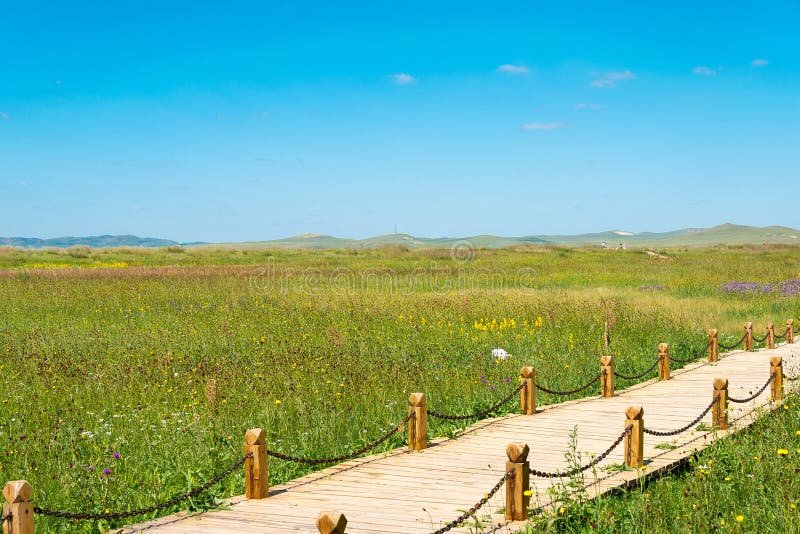
Site_Of_Xanadu.
Frequently Asked Questions
Frequently Asked Questions About the Site of Xanadu
1. What is the best time to visit the Site of Xanadu?
The ideal time to visit Xanadu is from June to September. During these months, you can enjoy mild temperatures and vibrant grassland scenery, making it perfect for outdoor activities and exploration.
2. How do I get to the Site of Xanadu from Beijing?
Xanadu is approximately 370 kilometers (230 miles) north of Beijing, which takes about 5½ hours by car. Due to limited public transportation options, a private transfer is the recommended way to travel, allowing for sightseeing along the route.
3. What are the opening hours for the Site of Xanadu?
The Site of Xanadu is open daily from 6 AM to 6 PM. Plan your visit accordingly to make the most of your time exploring this historical site.
4. How long should I plan to spend at the Site of Xanadu?
A visit typically takes about 1 to 2 hours. This duration will allow you to explore the main attractions, including the ruins, the statue of Kublai Khan, and the surrounding grasslands.
5. Are there any guided tours available?
Yes, guided tours are available for those interested in a more in-depth understanding of the history of Kublai Khan, the Yuan Dynasty, and the Mongolian Empire. You can contact local travel agencies to arrange a tour with an expert guide.
6. What attractions should I not miss while visiting?
Don’t miss the impressive statue of Kublai Khan, the ruins of Xanadu, the beautiful Jinlianchuan Prairie, and the Xanadu Site Museum, which offers insight into the history and culture of the area.
7. Is the Site of Xanadu suitable for families and children?
Absolutely! The Site of Xanadu is suitable for visitors of all ages, especially those interested in history and culture. The open grasslands also provide space for children to explore and enjoy outdoor activities.
8. What amenities are available at the Site of Xanadu?
While the site itself is primarily focused on historical and cultural exploration, there are basic amenities such as restrooms and information centers. Nearby, you can find options for dining and accommodations, particularly in Zhenglan Banner.
Final Thoughts on Your Trip
As you conclude your journey at the Site of Xanadu, take a moment to reflect on the rich tapestry of history that envelops this remarkable destination. From the whispers of Kublai Khan’s grand empire to the breathtaking expanse of the Jinlianchuan Prairie, Xanadu is not just a relic of the past; it is a living testament to the fusion of diverse cultures and the relentless spirit of exploration.
Walking through the remnants of this once-majestic summer capital, you can almost hear the echoes of ancient courtiers and the galloping hooves of Mongolian cavalry. The site invites you to ponder the stories of those who walked its paths centuries ago. Whether you admired the imposing statue of the great Khan, explored the ruins, or engaged in traditional nomadic activities, every moment spent here is a chance to connect with the grandeur of history.
As you leave, carry with you the essence of Xanadu — a place where cultures converged, and dreams of a prosperous era still linger in the air. Let this experience inspire you to seek out more of the world’s hidden treasures, reminding you that history is not just to be observed but to be felt and cherished. Safe travels!